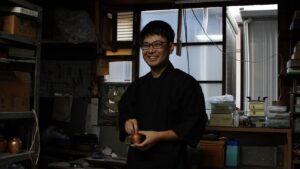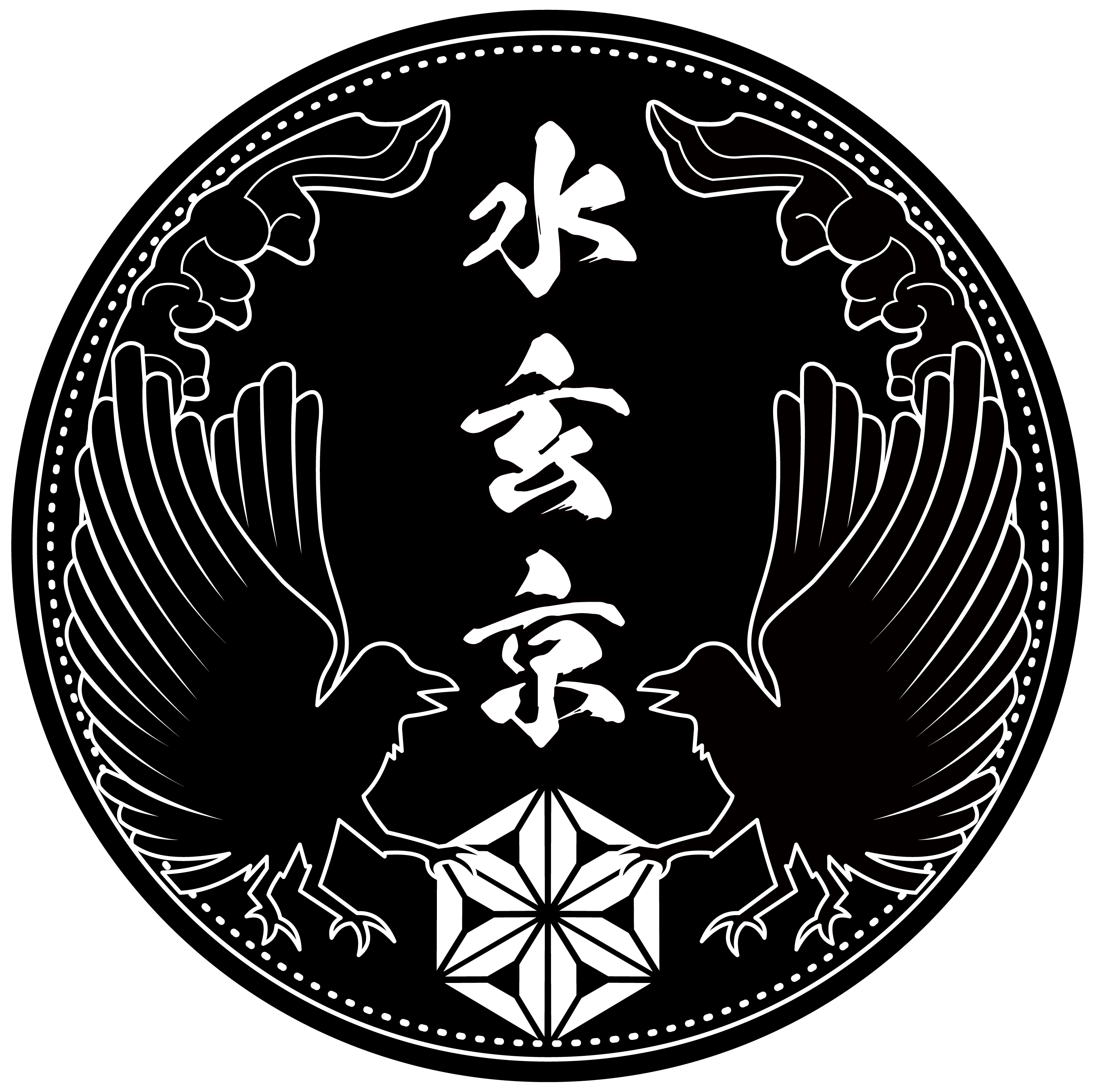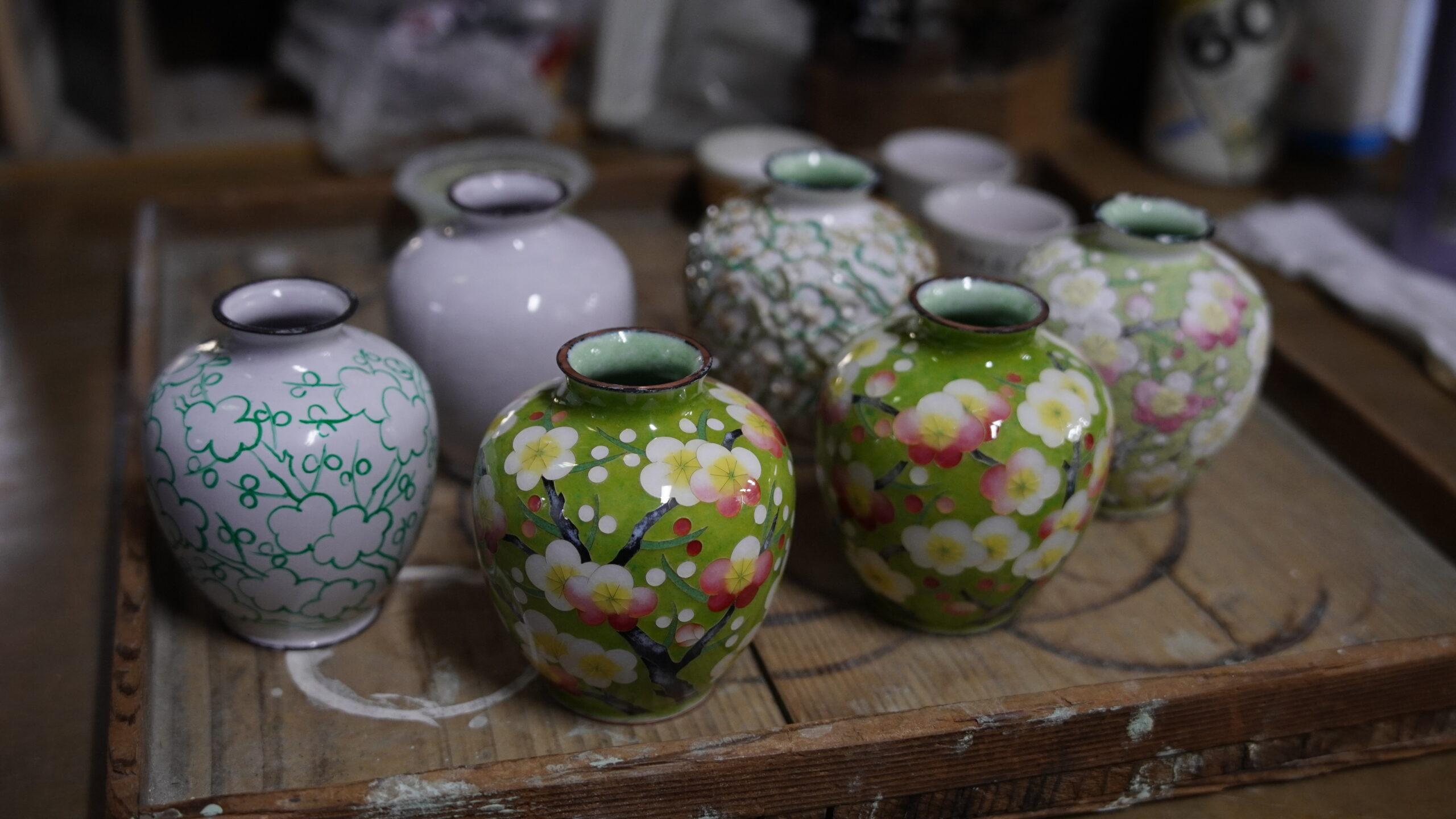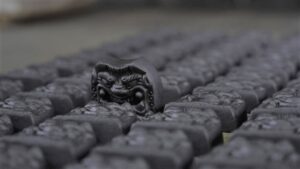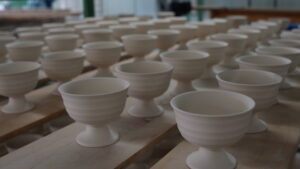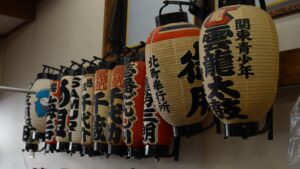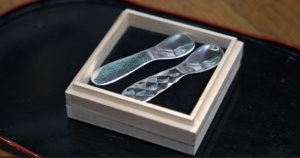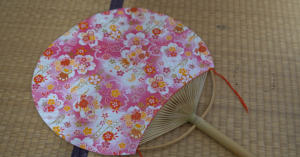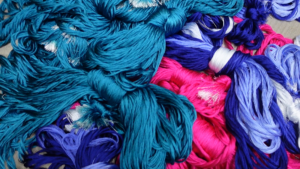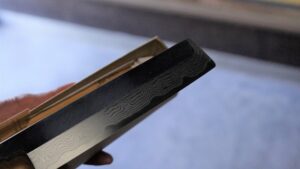Making Process
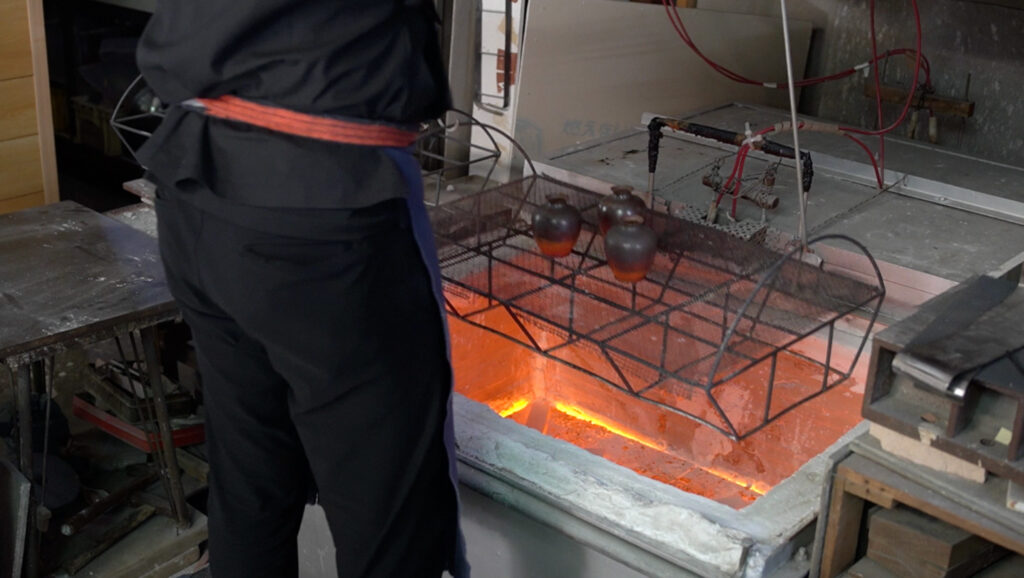
Making the base
The base is made of metal, glazed, and fired once. This process creates the base of the craft.
Silver wire
A process in which sterling silver wire is set along the contours of the design. Each piece is extremely small and requires a great deal of concentration.
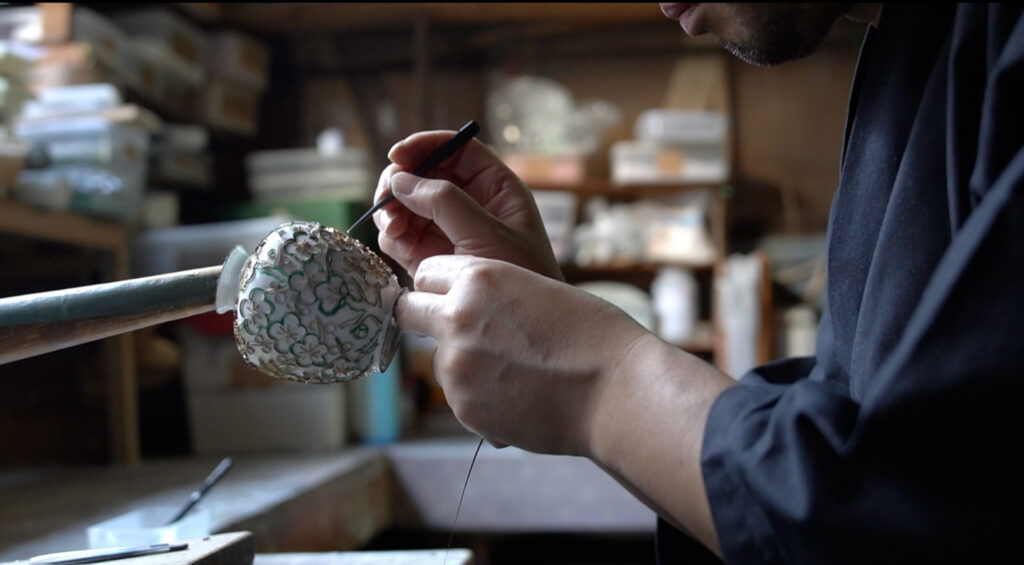
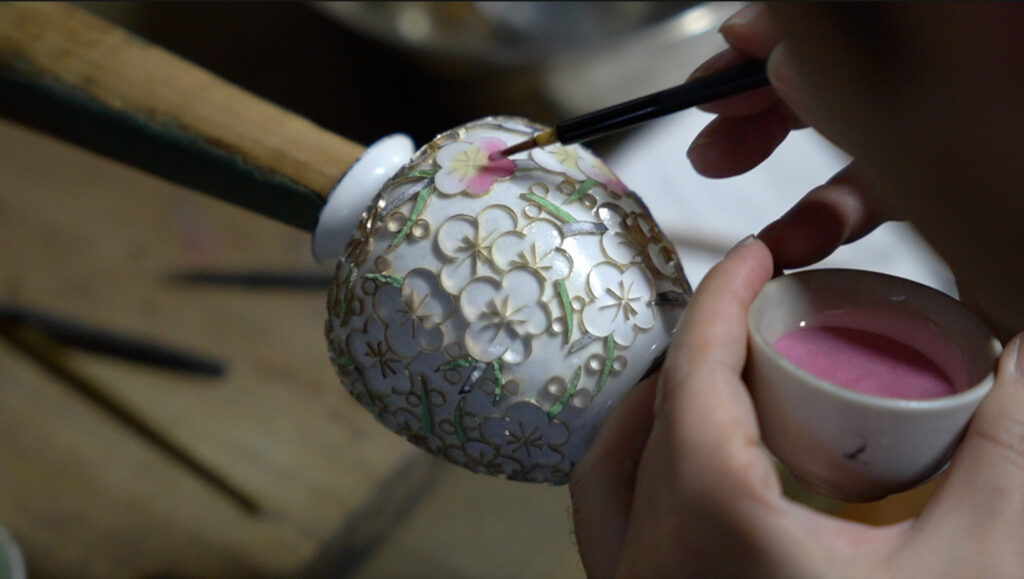
Glazing
Glassy glaze is applied to the silver wire with a small brush. This is an important process to produce shades of color.
Firing
Firing process is done at least seven times. Layers of glaze are created to produce a three-dimensional effect.
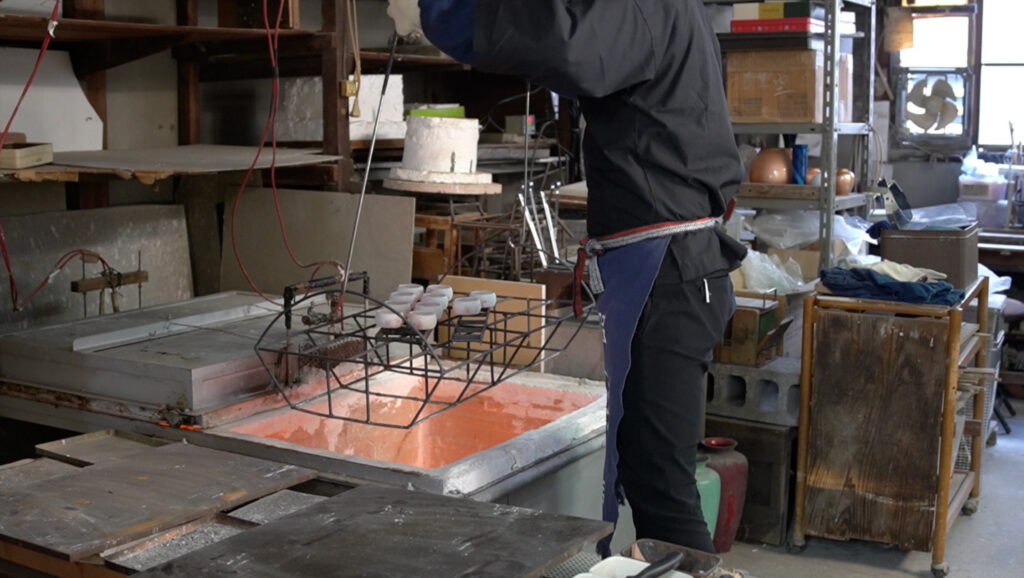
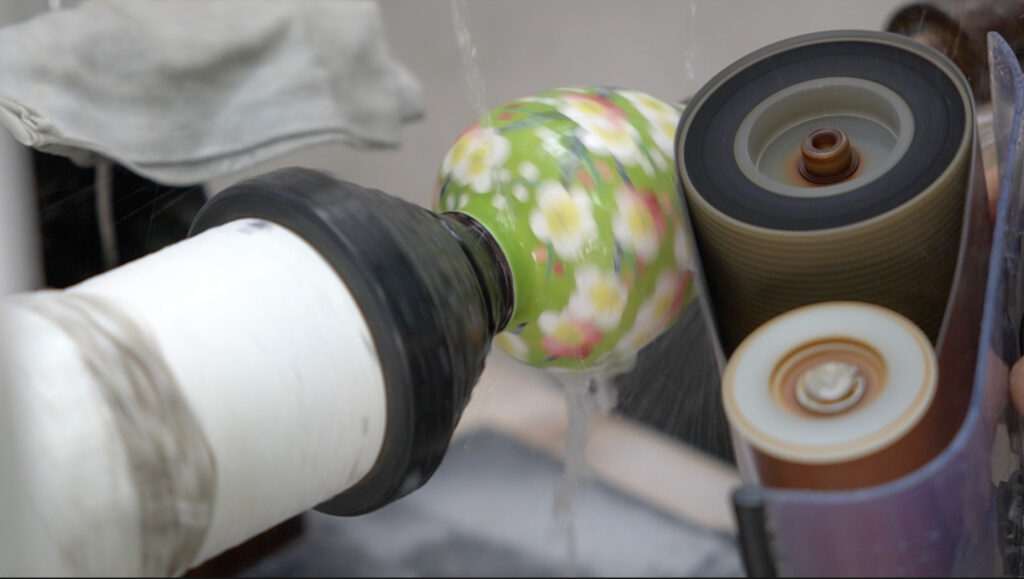
Polishing
This is the final process of cloisonne. Diamond paper of different coarseness is used to create a glossy finish.
What is Cloisonne?
Cloisonne enamel ware is a decorative craft in which silver wire is set on a metal base and a glassy glaze is attached to the silver wire. There are two types of cloisonne enamel techniques: “wired cloisonne,” which uses the silver wire as the outline of the design, and “wireless cloisonne,” in which the silver wire is removed at the timing of applying glaze or not used from the beginning in order to create a fuzzy impression. Both of these techniques, which can only be seen with cloisonne enamel ware, fascinate people who see them.
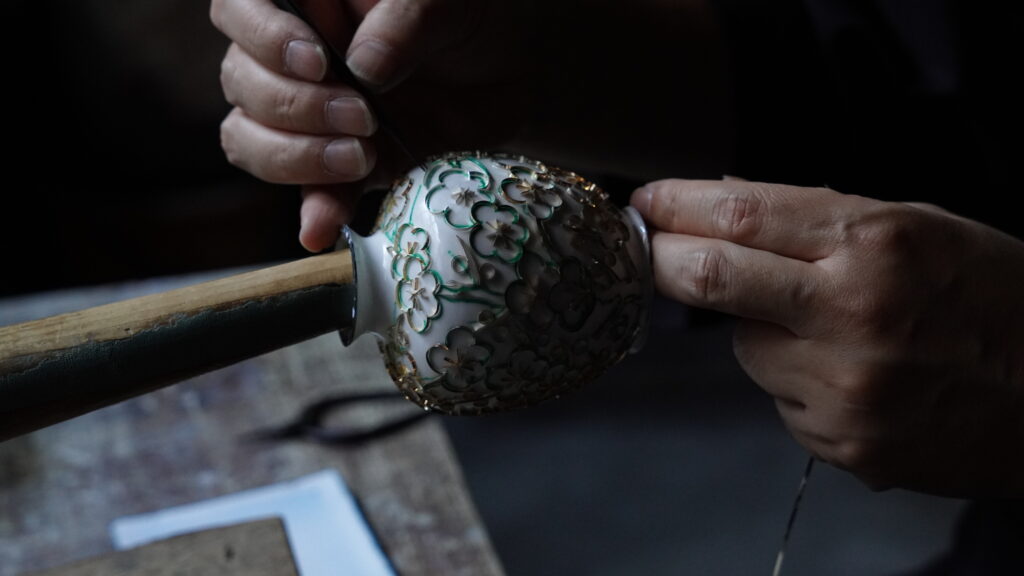
The beauty of colors on curved surfaces
Owari cloisonne ware is a type of pottery crafted in Nagoya and Ama cities. The word “pottery” may remind you an image of clay being molded by using a potter’s wheel, but Owari cloisonne enamel ware does not use clay. Instead of using it, it has a base made of metal and a glaze made of crystal glass, making it the highest quality glass. Unlike cloisonne enamel ware in other regions, Owari cloisonne enamel ware is made into relatively large items such as three-dimensional pieces, flower vases, and funerary urns. The most distinctive feature is wired cloisonne, in which silver wire is used to outline the design of flowers, birds, wind, and the moon. The smooth surface of this gem allows the people to feel the attractiveness of the piece. There is a town called Shippo-cho (cloisonne town) in Nagoya, named after the town where crafting cloisonne enamel ware has flourished since the Edo period. In such a town, there are many craftsmen who are still at the forefront of cloisonne enamel ware production.
The origin of the word cloisonne!
To begin with the origin of the name of Shippo (seven treasure), why is cloisonne written as “seven treasures” in Japanese? The origin of the word literally comes from the seven treasures mentioned in Buddhist scriptures, and the name “seven treasures” is said to have come from the fact that the cloisonne ware was as beautiful as the treasures found in the scripture. The roots of the word “shippo” date back to B.C., and it was introduced to Japan from China and Korea in the 6th and 7th centuries. When the time passed to the Edo period in the 17th century, Hirata Donin of Kyoto is said to have traveled to Korea to learn the tskills of making the craft. During the Edo period, cloisonne enamel ware production was flourished due to the contribution of Hirata Donin. Cloisonne enamel ware was mainly used to decorate sword fittings, shrines and temples, nail covers used in castles, and fusuma sliding doors. However, this technique was kept only in the Hirata family and was not used by everyone. Later, in Owari, Kajitsune Kiji clarified the technique of cloisonne enamel ware, and it enabled “modern cloisonne enamel ware” to be began, which is said to be the beginning of Owari cloisonne enamel ware. From there, it spread to other parts of the country, Tokyo, and Kyoto.
This is the view of the universe from Aichi.
Looking back on the history of cloisonne enamel ware to date, Owari cloisonne enamel ware has been made mainly for artwork or appreciation rather than for everyday use, but today it is transformed into a variety of everyday items that add color to our lives. For example, Kato Cloisonne Studio uses cloisonne enamel techniques to create works of art to decorate the works of Van Gogh and other famous painters as interior decorations. The vivid colors created by creative artist and the beautiful texture unique to cloisonne enamel ware are matched together to create a one-of-a-kind craft. Moreover, the “Space Series” of cloisonne ware shows you something that you have never been seen before. The appearance of the craft is made with wireless cloisonne enamel express the pattern of universe, and the embodiment of a shimmering galaxy is mesmerizing to behold. Adding this piece to your interior design will add a sense of luxury to your room!
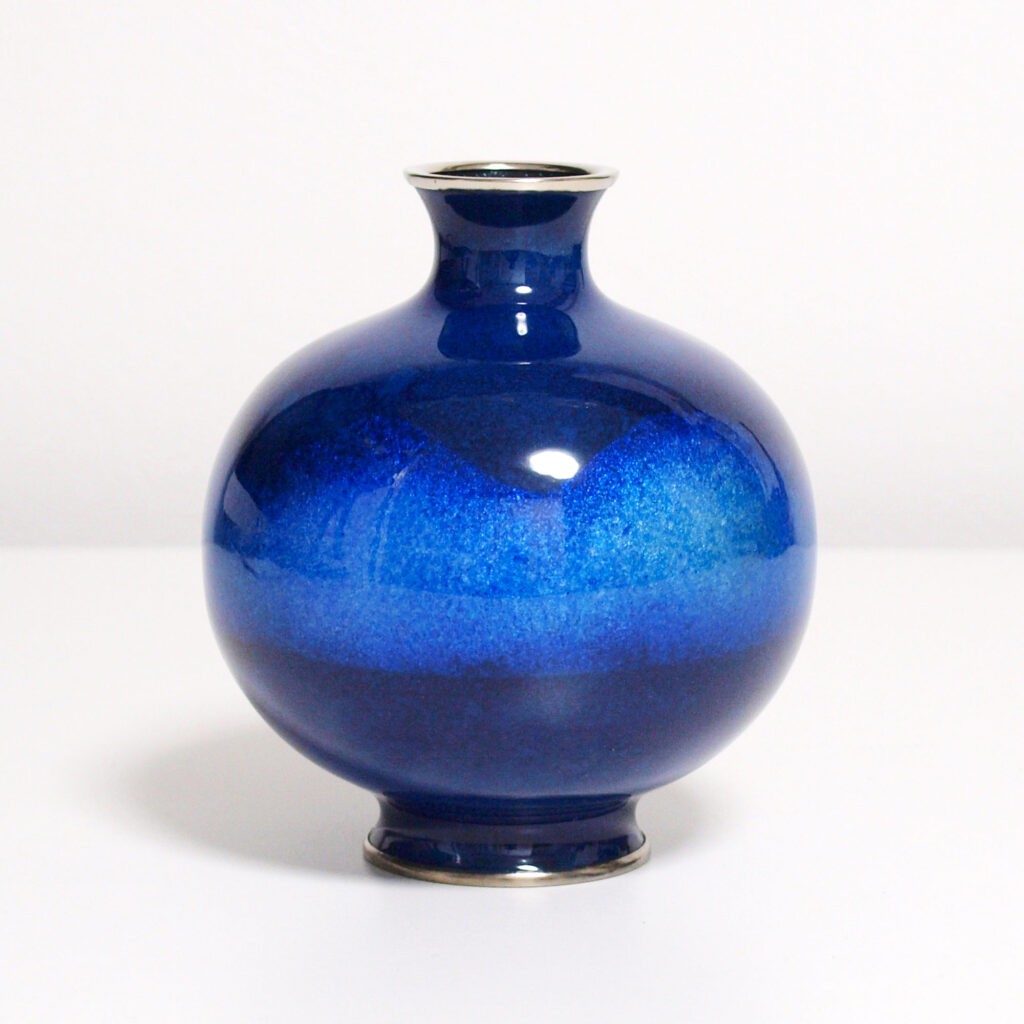
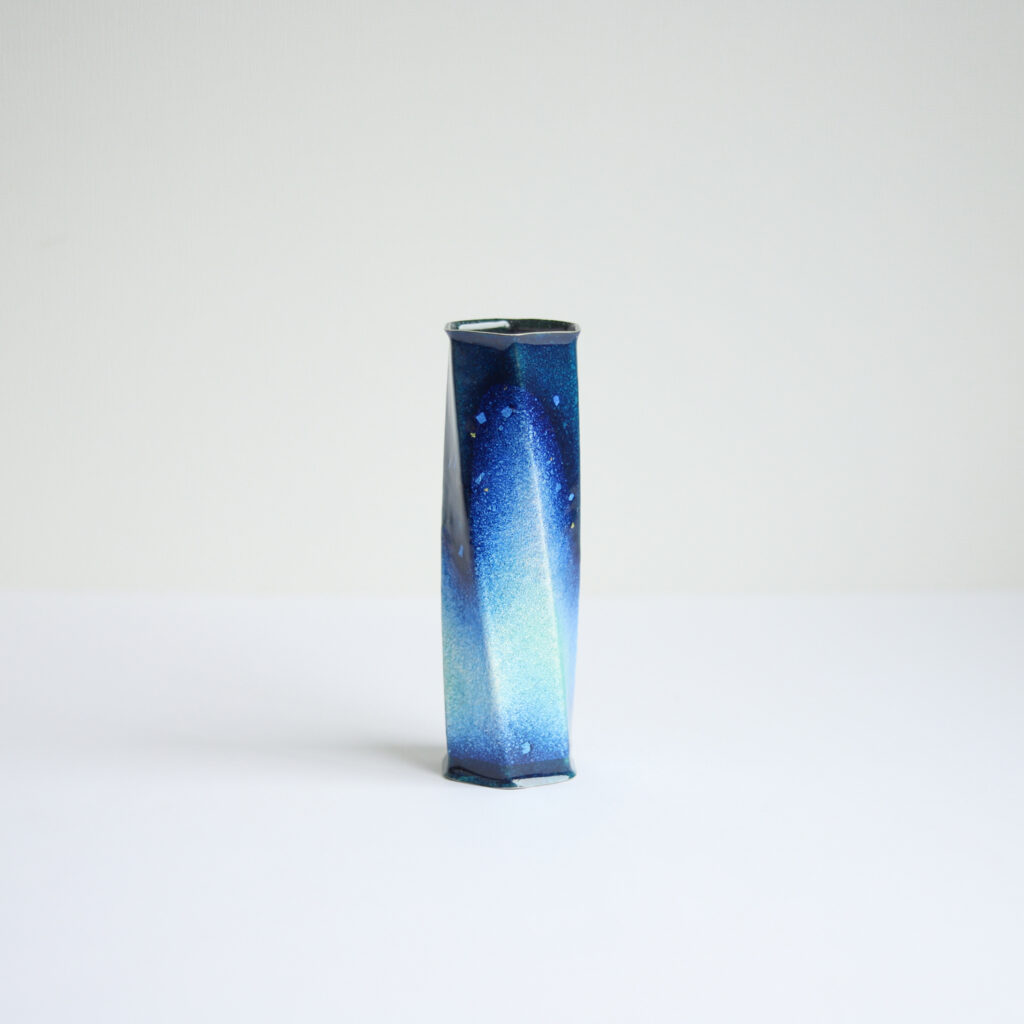
Owari cloisonne enamel ware, made by its craftsmen with great technique, will surely add color to your life. How about using Owari cloisonne, a crystallization of beauty created by its history, to feel the Japanese craftmanship for daily life? You can purchase various cloisonne enamel works from the Suigenkyo online store. Please visit us to find your favorite piece.
